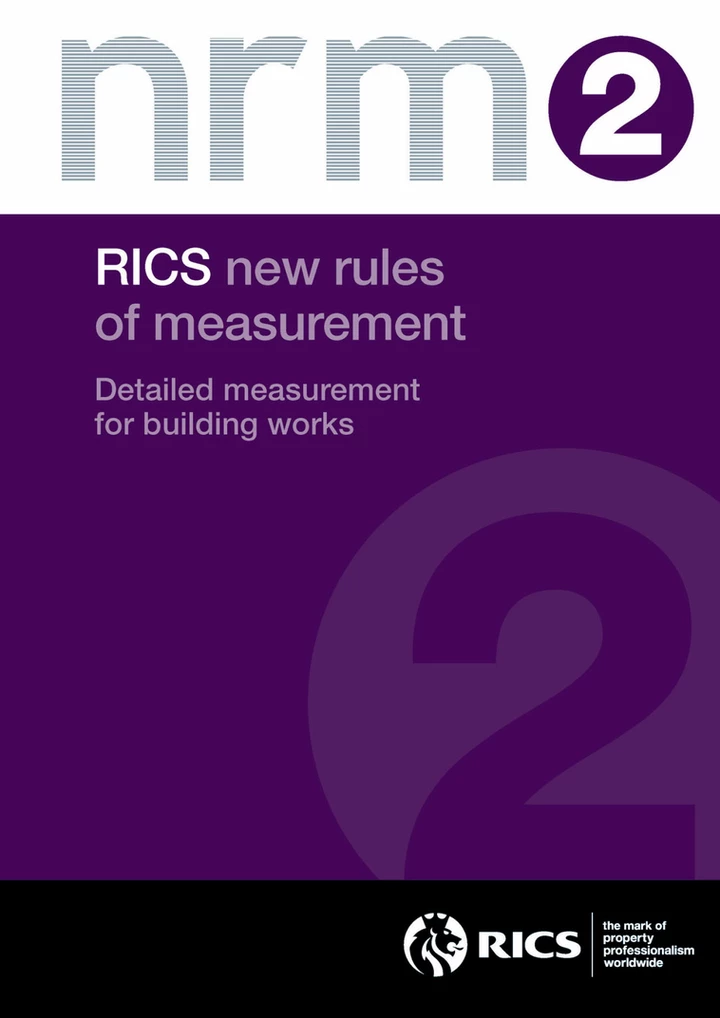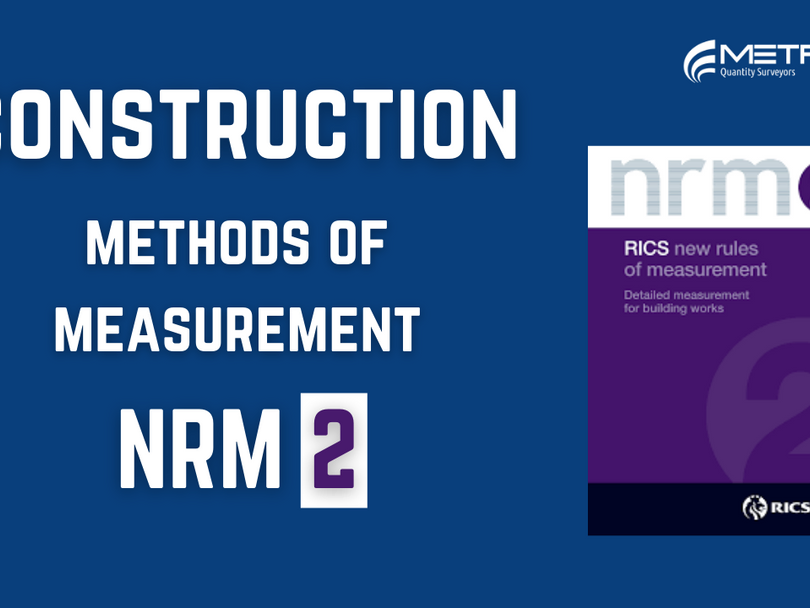The Royal Institute of Chartered Surveyors (RICS) have developed and published a suit of documents titled the New Rules of Measurement or NRM for short. There are 3 volumes that make up the New Rules of Measurement, NRM 1, NRM 2 & NRM 3. This blog is going to provide a summary of what NRM 2 is and what it was developed for.
If you would like to obtain a brief overview of the history of methods of measurement for construction and a brief overview of the 3 NRM volumes that are used today, then please takea look at our “construction methods of measurement – explained” video and blog that can be found on this website or Youtube.
NRM 2 is titled: “Detailed measurement for building works” and deals with Bill of Quantities (BoQs), all aspects of them! So, if you do not know what a Bill of Quantities is or the benefits ofthem, then we would highly recommend watching our “Bill of Quantities explained” video or reading our blog for a brief overview. But, to speed things up, the main purpose of a Bill of Quantities is to provide a list of items alongside their descriptions and quantities, that are required to complete a construction project. Contractors & Subcontractors are then able to attribute their price to each aspect of the works – resulting in a total cost for the construction project.

NRM 2 replaced the Standard Method of Measurement for Building Works in 2013, which was also published by RICS but way back in 1922, so as you can imagine, it was in need of some updating. NRM 2 consists of 3 main parts:
Part 1 places measurement for works procurement in context with the RIBA (Royal Institute of British Architects) Plan of Work and the (Office of Government Commerce) OGC Gateway Process; and explains the symbols and terms used throughout the document.
Part 2 is the bulk of the document, specifically covering all things Bills of Quantities, this includes:
· Explanations of the function of bills of quantities
· Provides work breakdown structures for bill of quantities
· Defines the information required to enable preparation of bill of quantities
· Describes the key constituents of bill of quantities
· Explains how to prepare bill of quantities
· Sets out the rules of measurement for the preparation of bill of quantities
· And, provides the method for dealing with contractors’ preliminaries, contractors’ overheads and profit, contractors’ design fees, other development/project costs, risks & inflation.
Part 3 explains the tabulated rules for the measurement and description of building works for the purpose of works procurement.
That is a lot of stuff about BoQ’s! So why have RICS gone to so much effort in creating the NRM 2 document?
The main aim and focus of NRM 2 is to provide a structured basis for measuring building workand a consistent industry standard for dealing with other key cost components associated with a building project. Using a general protocol, such as the one NRM 2 details, should allow any surveyor to measure any type of construction from any era and the rules provide a framework, which can be used to develop both bespoke and standard schedules of rates.
BoQ’s also provide the following benefits:
· It saves the cost and time of several contractors measuring the same design in order to calculate their bids for competition;
· It provides an extensive and clear statement of the work to be executed;
· It provides a very strong basis for budgetary control and accurate cost reporting of the contract (once the contract is awarded and construction commences)
· When a BoQ is priced, it provides data to support claims for tax benefits
· BoQ’s provide one of the best sources of real-time cost data, which can be used for estimating the cost of future building projects (i.e. historic cost information (see 2.17)) as it provides a cost model in a single document.






